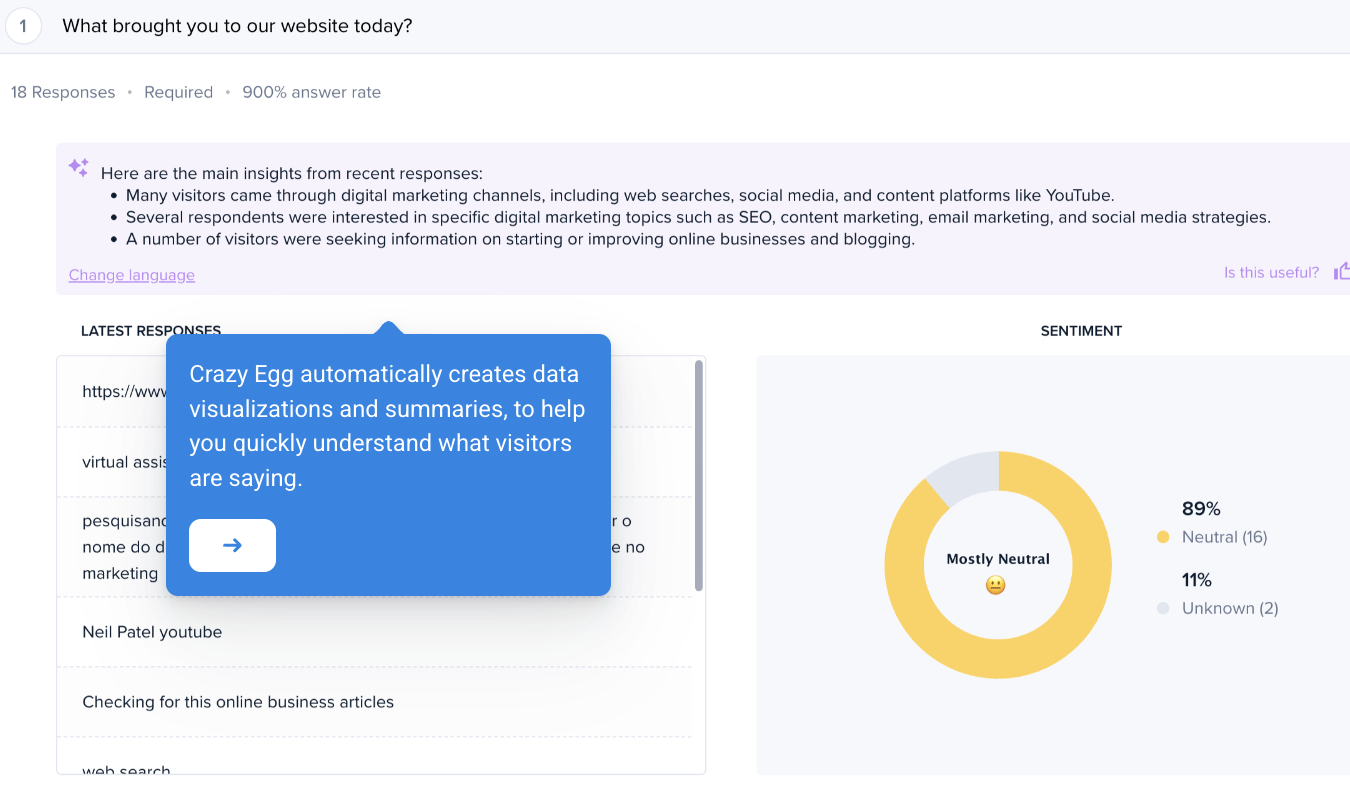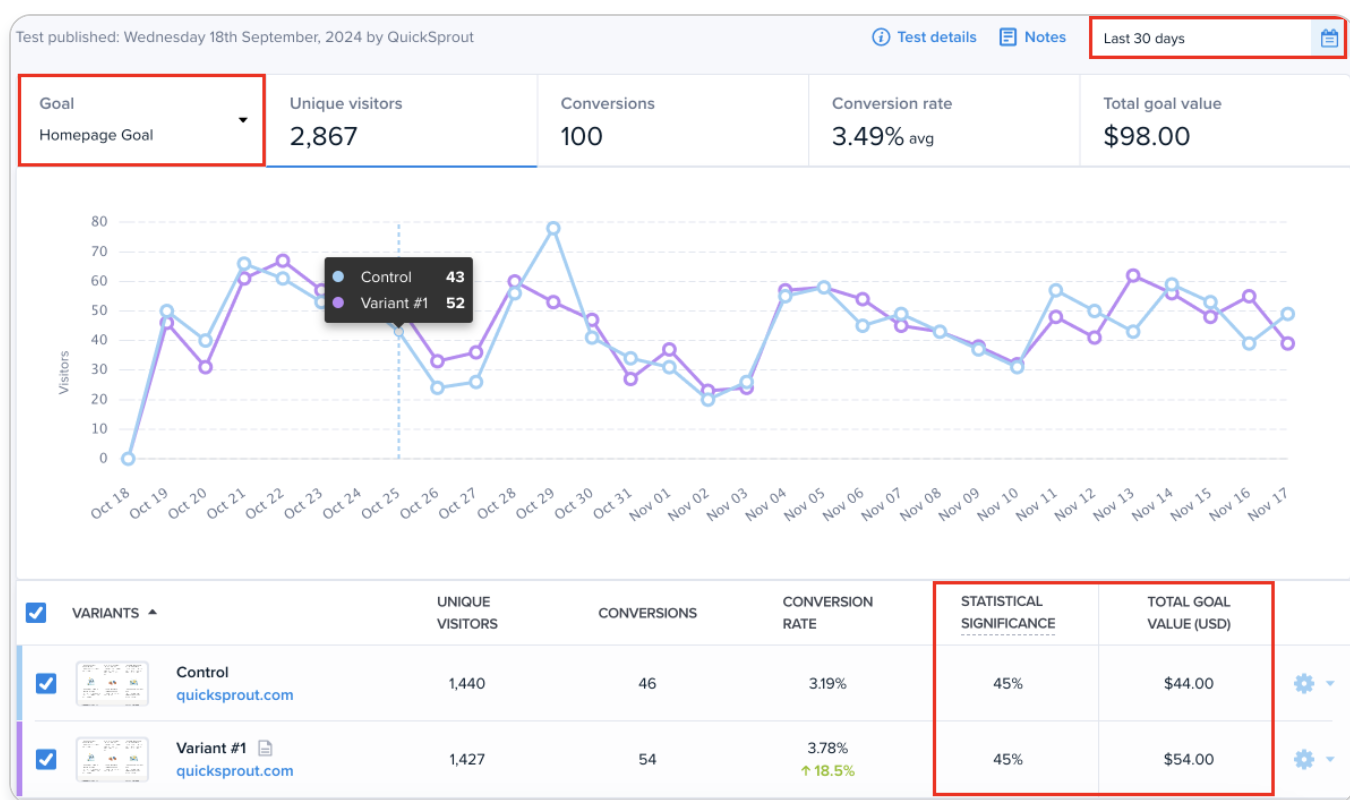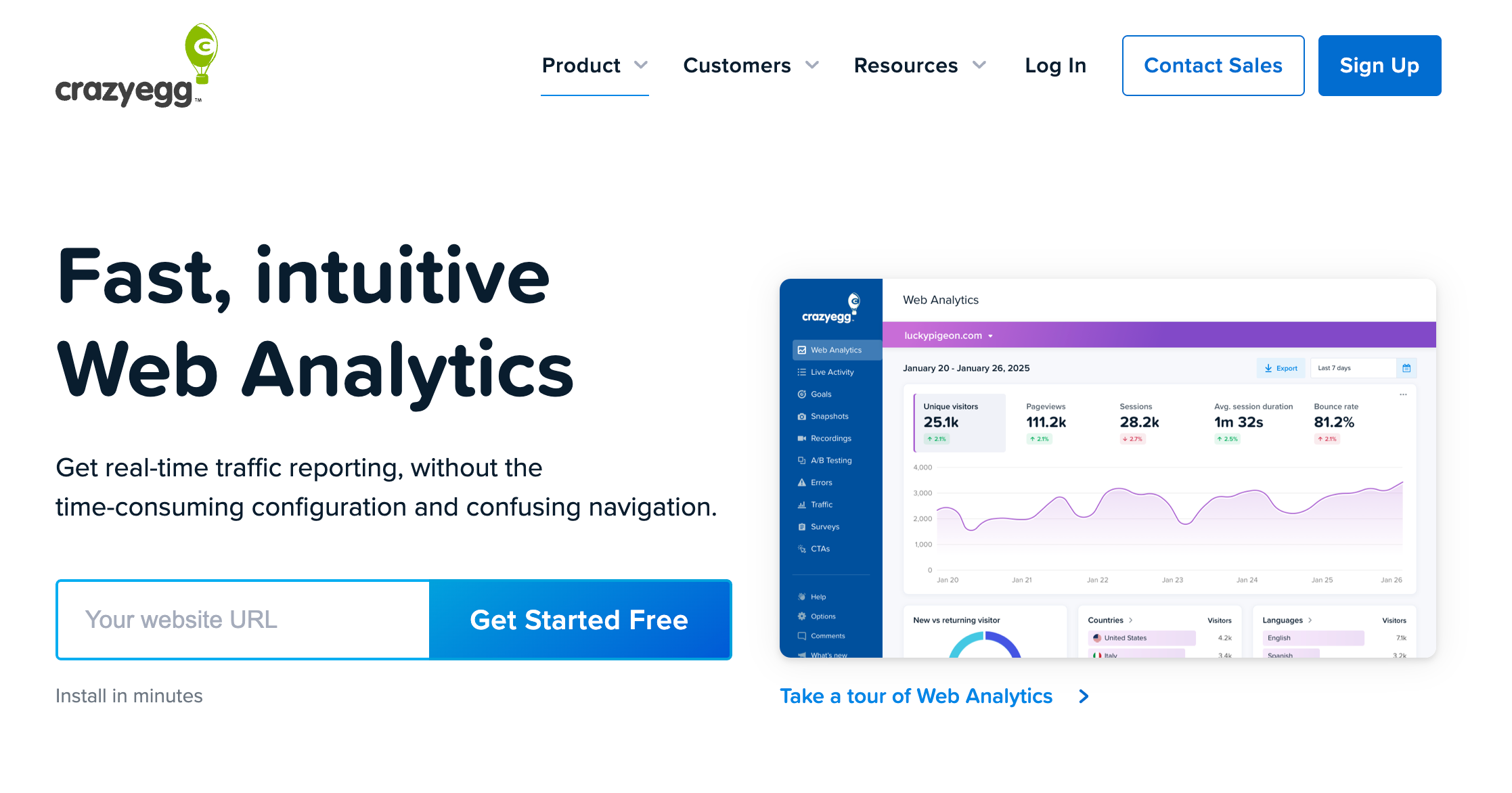8 Seductive Vanity Metrics You Will Burn Money Chasing
A vanity metric is a number that makes you feel good without directly impacting the business. The term captures the intoxicating pride that comes with a burst of new followers or viral jump in social shares — but also the hollowness of these impressive numbers when it comes to actual results.
The danger lies in mistaking a vanity metric for a valid, actionable metric that’s ultimately linked with real gains for your company, like new customers, more sales, or lower costs.
Here are some classic vanity metrics:
- Follower Count
- Impressions and Reach
- Video Views
- Website Visits
- Likes and Reactions
- Social Shares
- Email Open Rate
- App Downloads
But more followers is a good thing right? More social shares is a sign of connecting with an audience?
Maybe. Do those followers and shares lead to new paying customers? Or just more followers and shares?
In order to form any sort of useful interpretation from vanity metrics, you will need to incorporate metrics that are actually tied to real business outcomes.
At their best, vanity metrics are a signal that you are doing something right.
Investing in the source of that positive signal makes sense. So keep producing great content, delivering amazing customer service, and creating incredible products — focus on taking care of your customers and the likes, shares, and follows will happen naturally.
Trying to boost these signals themselves is like saying: In order to perform well, we need more to get more applause.
Why Vanity Metrics Have So Much Pull
They are in your face. How could you not care?
Video views, followers, likes, shares — it’s all calculated automatically and displayed prominently.
Vanity metrics are in everyone else’s face, too.
The public can see a real-time count of likes and followers (or lack of them), and make judgements about your brand based on them.
This is true on the broad range of platforms where these metrics exist: Facebook, 𝕏, GitHub, App Store, Product Hunt, and so on.
It’s almost impossible not to notice the vanity metrics for an account or individual post. The conspicuous position of these numbers in these platforms is no accident. Users can signal what’s important to one another, who is worth following, and those signals build up.
This phenomenon feeds on itself and its audience (e.g. Miguel was 😡 about Sora’s story), powered by algorithms that reward engagement. These platforms are optimized relentlessly to max out the time and attention they consume — people care about these metrics, so they are featured loudly, everywhere, all the time.
How Vanity Metrics Threaten Business Goals
By themselves, vanity metrics don’t do anything for your business. Full stop. They can’t.
When those numbers are going up, the social media platforms are winning. The engagement is good for their business because it puts advertising dollars in their pocket.
For your brand, a like is a like. You can’t eat it or trade it for hard currency.
You could get a million likes, followers, or video views and it would not bring you any closer to a meaningful business goal.
Vanity metrics offer quick, visible results, which feel rewarding but lack substance. They create a false sense of achievement and divert focus from meaningful progress.
This is the trap you want to avoid: focusing so much on driving a vanity metric that you deprioritize attention on the metrics that keep your team fed.
Why do businesses fall into this trap?
Beyond the primal appeal of vanity metrics, I think confirmation bias plays a big role. Vanity metrics are easy to cherry-pick. You can see what you want, unconsciously manipulating the mushy engagement data to reinforce your existing beliefs.
I also think that vanity metrics can paper over uncomfortable truths about poor marketing performance. You can make a beautiful report with a hockey-stick chart showing a 347% increase in impressions that completely avoids the lack of sales.
This issue is really dangerous because stakeholders that don’t understand paid search and social media marketing will be COMPLETELY CAPTIVATED by massive numbers of ad impressions.
The job of good marketers is to not let themselves, their team, their org, or their clients get carried away by these tempting, in-your-face metrics.
How to Handle The 8 Most Seductive Vanity Metrics
Metrics aren’t inherently good or bad. They only gain meaning by analyzing them in context, combining them with qualitative insights (like user behavior and survey data) and quantitative performance metrics (like conversion rates and sales).
In that light, my goal here is to define these metrics and explain why they are seductive and misleading — but also to show that each one can be valuable when interpreted in context.
- Follower Count
Follower count is the total number of users following a brand’s social media account.
Why follower count is seductive: It makes a brand look popular, influential, like they are doing something right.
Why follower count is misleading: You can gain followers for good and bad reasons. The increase doesn’t guarantee more sales, a decrease doesn’t guarantee less.
Follower count is valuable when you can look at it in context with other engagement metrics like click-through rates (CTR) and purchases. That lets you know followers are interacting proactively or contributing to your brand’s community.
It’s possible to drive your follower count up by running really superficial campaigns to attract a general audience. If the audience doesn’t have intent, you will get nowhere. Follower counts are also easily inflated bad publicity, purchasing fake accounts, and other unethical or unhelpful tactics. Growing the top line follower number is much less important than reaching the specific audience with potential to complete the full customer journey.
- Impressions and Reach
Impressions track the number of times an ad is shown to users. Reach is the total number of unique users who have seen an ad.
Why these two are so seductive: Because it’s easy to drive metrics for impressions and reach through the roof. People who don’t understand social media and paid search will be over the moon about thousands and thousands of people “seeing” their ad.
Why these metrics are misleading: Impressions and reach rarely correlate to conversions and sales. It takes no effort to get astronomical impression metrics that are a total dead-end in terms of creating real value for your business.
Impressions and reach are valuable when considered alongside other engagement and sales metrics. Customer Engagement Rate (CER), for example, measures the ratio of meaningful interactions to the total number of impressions. As long as you define meaningful interactions appropriately — clicks, DMs, purchases — the CER metric will show you which ads are most effective.
Metrics like return on ad spend (ROAS), CER, and other measures of ad effectiveness are the key to making money. The sooner you can cast a smaller net, the better. The higher your impression and reach numbers go, the bigger the profits for the ad platform. They are happy to help you spend more.
- Video views
Video views show the number of times users watched at least a few seconds of a video.
Why video views are seductive: Because a high view count suggests that you are connecting with tons of new people and raising brand awareness.
Why video views are misleading: It’s a very surface-level measure of engagement. A person who watched your full Instagram Reel and another who scrolled on after 4 seconds are both counted towards the total view number.
Video views are valuable when a significant percentage of users watching are actually converting.into customers. If you can track followup actions and meaningful engagement from users finding you through videos, you may have opened up a useful channel.
The video views metric is incredibly easy to manipulate with clickbait, enraging content, charismatic presenters, and other tactics that attract an audience looking to be distracted. Drawing lots of these viewers will do nothing for your business except draw more of these viewers.
- Website Visits
Website visits measures the total number of users that visit a brand’s site
Why it’s seductive: A dashboard that shows a spike in website visits is exciting. It feels like your site is growing, even when the surge is over.
Why website visits are misleading: Website visits tell you nothing on their own. You could easily have more traffic on your site with less meaningful engagement, fewer conversions, and so on.
Website visits are valuable when you know exactly where website traffic is coming from and you have accurately tracked CTR, RPC (rate-per-click), sales, and all important website KPIs. Then you can make informed interpretations about website visits, and predict what happens if you can drive that number higher.
High-intent website traffic is extremely valuable. Driving random traffic to your site is pointless beyond personal vanity. You need to attract users who engage with the site, make purchases, and become repeat customers. Website visits aren’t a useful metric to assess how you are progressing towards those truly important goals.
- Likes and Other Reactions
Likes and other reactions measure the number of users who smash the like button (or heart, angry face, sad face, etc.) on a brand’s social media post.
Why they are seductive: It feels like you are making a splash when users are reacting to your content. It almost feels like concrete proof that you are successfully raising brand awareness.
Why they are misleading: Reactions don’t tell you whether people are taking further action, and reactions alone won’t put food on the table.
Likes and reactions are valuable when you can clearly trace positive business outcomes back to them, such as new customers and earned media.
Nobody wants social posts with straight zero likes, comments, retweets, shares — that looks lifeless and signals that no one cares. But that is not necessarily true. Reaction buttons are there to spur public engagement (for the platform’s benefit, not your business). In theory, you can convert an infinite number of users on a post without a single public reaction.
- Social Shares
Social shares track how often a post has been shared between users.
Why social shares are seductive: Because they are seen as the spark and initial gasoline that sets off viral content. One share is an affirmation, a spike in shares can feel like a coronation.
Why social shares are misleading: Shares do not necessarily indicate a genuine level of interest or serious buying intent. They are a surface-level form of engagement that is not guaranteed to connect back to business goals.
Social shares are valuable when you have a deeper picture of the true engagement generated from these shares. Are they leading high-quality comments and conversations? Are they leading to increased conversions?
Social shares are a step toward measurable impact, but not a measurable impact themselves. It’s quite possible for community building on social media to lower customer acquisition costs (CAC), sometimes dramatically. Keeping an eye on that number will tell you more about how the social media strategy is working than the number of shares.
- Email Open Rate
Email open rate tracks the percentage of recipients that open an email. It’s not public, but some people take this number personally, so it fits on this list.
Why it’s seductive: Because email marketing is hard. Even getting people to open emails feels like an accomplishment when you are struggling to get traction with a campaign. Increasing open rates feel like a concrete step in the right direction — decreasing rates make you feel like you are doing something wrong.
Why email open rate is misleading: Opening an email doesn’t guarantee the reader taking any action that will help your business. Open rates are not a lever you can use to influence anything, except perhaps feeling better that more people saw your work (aka: vanity).
Email open rate is valuable when: You are looking at really clean data in a controlled setting, with an eye towards actionable metrics that you care about, like conversions or sales. A/B testing is the best way to test effectiveness, and to ensure that you have got all of the noise out of your interpretation.
Normally, there is just too much noise to interpret anything of value from marginally higher or lower open rates. It’s a weak, messy data point to use when you have hard, actionable metrics to guide you, such as conversions and CTR.
- App Downloads
App downloads is the number of users who have installed a software product.
Why it’s seductive: It looks great externally, and platforms like GitHub or Product Hunt have leaderboards that show the most downloaded apps. Who wouldn’t want to see their tool at the top of those lists?
Why app downloads are misleading: Because it doesn’t capture your user-base in a meaningful way. You can’t tell from that number whether users downloaded it as a one-time fix, out of curiosity, or whether they are a rabid, everyday user.
App downloads are valuable when: you have more information about active users, how they are engaging, and whether or not they stay loyal. With this context, there is at least the potential for some predictive value looking at new monthly installs.
As a sign of social proof, app downloads can influence consumers and drive adoption. The apps on the “Most Downloaded App!” lists get more attention than others. Plus, I know I don’t want to be the first person to download a new app. But an active user base that is engaging with your product and creating real value is important — the topline number of downloads can mask a much weaker number of true, valuable users.






